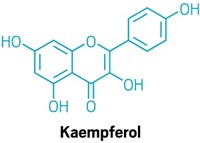Advertisement
Grab your lab coat. Let's get started
Welcome!
Welcome!
Create an account below to get 6 C&EN articles per month, receive newsletters and more - all free.
It seems this is your first time logging in online. Please enter the following information to continue.
As an ACS member you automatically get access to this site. All we need is few more details to create your reading experience.
Not you? Sign in with a different account.
Not you? Sign in with a different account.
ERROR 1
ERROR 1
ERROR 2
ERROR 2
ERROR 2
ERROR 2
ERROR 2
Password and Confirm password must match.
If you have an ACS member number, please enter it here so we can link this account to your membership. (optional)
ERROR 2
ACS values your privacy. By submitting your information, you are gaining access to C&EN and subscribing to our weekly newsletter. We use the information you provide to make your reading experience better, and we will never sell your data to third party members.
Biological Chemistry
Extending Shelf Life With Natural Preservatives
by Melody M. Bomgardner
February 10, 2014
| A version of this story appeared in
Volume 92, Issue 6
For busy shoppers who value convenience, packaged foods can be an easy weeknight fallback. Refrigerated products such as deli meats, with help from preservatives, are expected to last through a week or two of packing school lunches. But consumers looking to avoid synthetic preservatives confront an alphabet soup of additives: BHT, BHA, and TBHQ. Not exactly Grandma’s recipes.
COVER STORY
Extending Shelf Life With Natural Preservatives
But who could say no to rosemary extract? Naturex has been processing rosemary at its factory in Morocco since 1992. At the time, the extract was in demand as a flavor for meats that benefited from its savory astringency. To their surprise, some customers learned that it also stabilized the meat, says Baptiste Demur, business manager for Naturex’s natural preservatives line.

It turns out that two components of rosemary, rosmarinic acid and carnosic acid, are responsible for the long-life effect. Both inhibit the free-radical chain reaction that leads to oxidation of fats and oils. However, they aren’t responsible for the flavor of rosemary. Demand for Naturex extracts has grown as the firm created extracts that can be used in non-rosemary-flavored sweet and savory foods.
“Lately we’ve seen very strong growth for this product line, especially since clean labels have become mainstream,” Demur says. “Now, with the information that people have access to, they say, ‘What is BHT? Oh my God, it is a chemical.’ And now there is pressure to remove that chemical.”
For a more recent look at natural preservatives, please click here.
Those common preservatives—known to chemists as butylated hydroxytoluene, butylated hydroxyanisole, and tert-butylhydroquinone—are antioxidants that prevent rancidity in fats and oils. Studies suggest they may cause cancer in rodents. Other preservatives that help fend off mold and other microbes include potassium sorbate and sodium benzoate. These antimicrobials are widely used and generally viewed as safe, but consumers can find their chemical names off-putting.
Demur says the extracts work well in many applications as replacements for BHT and BHA. Naturex recently partnered with the lactic acid firm Galactic to develop a product with the antioxidant properties of rosemary and the antimicrobial capabilities of organic acids made via fermentation.
Tell us: Do you choose foods made without artificial colors, flavors, and preservatives? Visit http://cenm.ag/additives.
Products of fermentation can be very label friendly. Last year, lactic acid specialist Purac launched a line of powdered antimicrobial ingredients that show up on food labels as “fermented cane sugar.” To a microbiologist, the term would seem vague. But it is not one purified additive but rather a savory mélange of fermentation products that happen to extend shelf life, says Ivo van der Linden, category manager for food preservation at Purac.
Scientists at DuPont Nutrition & Health tackle the microbe problem two ways. First they find out which yeast and mold organisms start to grow in a particular product. Then they use their expertise—and their high-throughput natural-compound screening system—to select a blend of ingredients that kill those microbes or prevent their growth, according to Jerry Erdmann, DuPont’s manager of food protection.
DuPont’s combination approach might bring together synergistic compounds such as active proteins and organic acids, Erdmann says. For example, one of DuPont’s antimicrobial products contains cultured dextrose, green tea extract, and mustard essential oil. Before a preservative is used in a food, it is tested to ensure it does not alter taste or color and can be easily incorporated.
“If we could ferment all of our foods, theoretically we would have no need for chemical preservatives,” van der Linden points out. “You can’t do that, but how can the process contribute to overall food stability, flavor, and shelf life? That part you have to get a feeling for.”






Join the conversation
Contact the reporter
Submit a Letter to the Editor for publication
Engage with us on Twitter